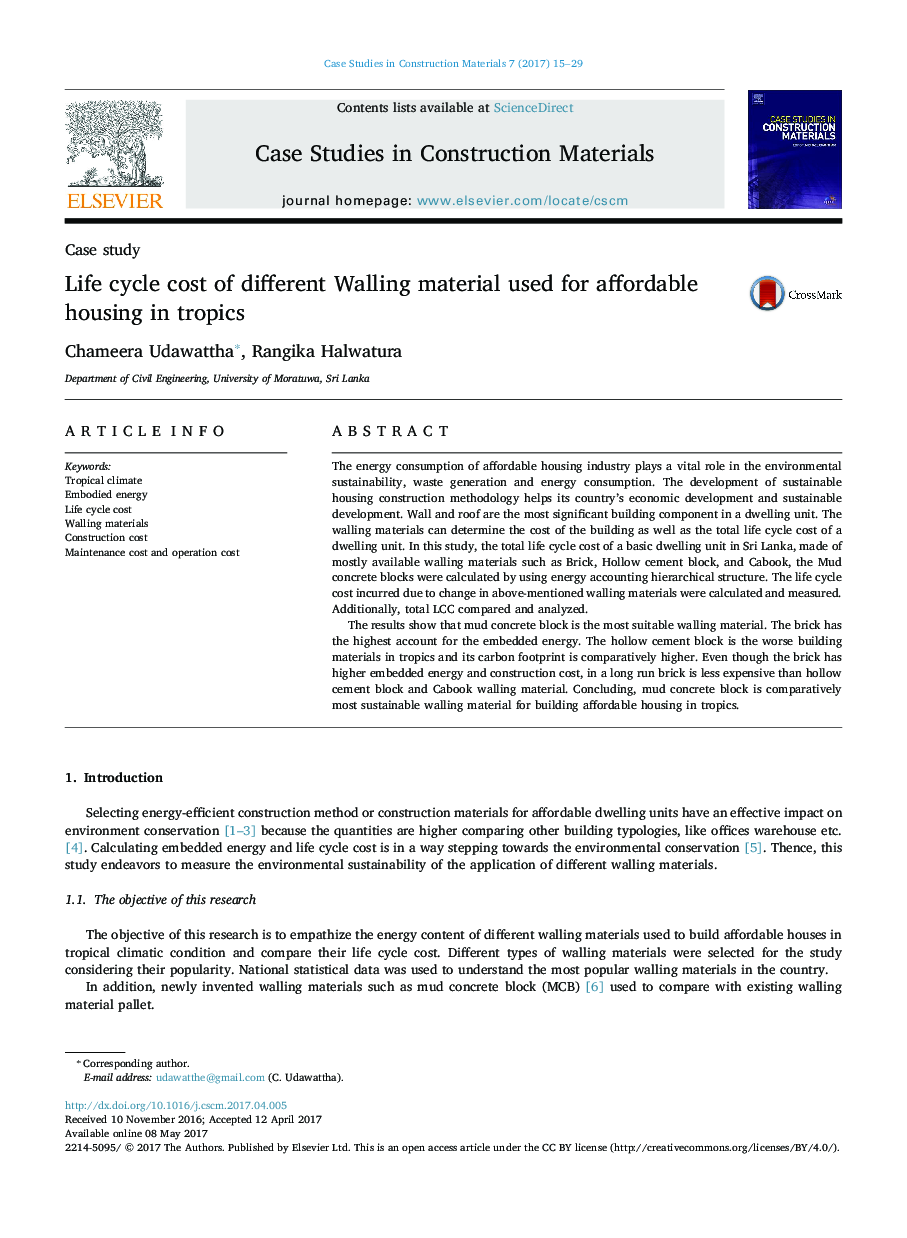| کد مقاله | کد نشریه | سال انتشار | مقاله انگلیسی | نسخه تمام متن |
|---|---|---|---|---|
| 4911562 | 1428459 | 2017 | 15 صفحه PDF | دانلود رایگان |

The energy consumption of affordable housing industry plays a vital role in the environmental sustainability, waste generation and energy consumption. The development of sustainable housing construction methodology helps its country's economic development and sustainable development. Wall and roof are the most significant building component in a dwelling unit. The walling materials can determine the cost of the building as well as the total life cycle cost of a dwelling unit. In this study, the total life cycle cost of a basic dwelling unit in Sri Lanka, made of mostly available walling materials such as Brick, Hollow cement block, and Cabook, the Mud concrete blocks were calculated by using energy accounting hierarchical structure. The life cycle cost incurred due to change in above-mentioned walling materials were calculated and measured. Additionally, total LCC compared and analyzed.The results show that mud concrete block is the most suitable walling material. The brick has the highest account for the embedded energy. The hollow cement block is the worse building materials in tropics and its carbon footprint is comparatively higher. Even though the brick has higher embedded energy and construction cost, in a long run brick is less expensive than hollow cement block and Cabook walling material. Concluding, mud concrete block is comparatively most sustainable walling material for building affordable housing in tropics.
Journal: Case Studies in Construction Materials - Volume 7, December 2017, Pages 15-29